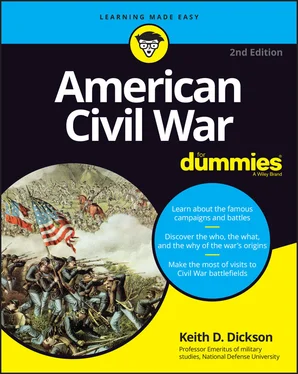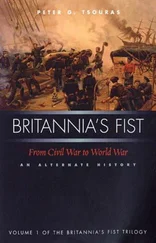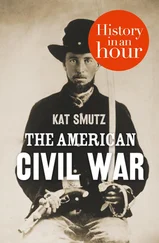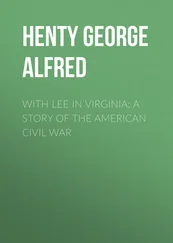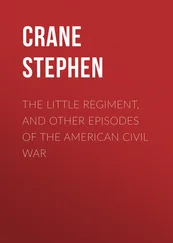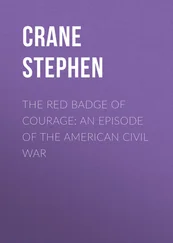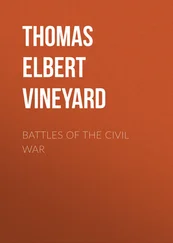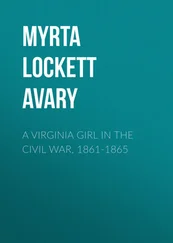Keith D. Dickson - American Civil War For Dummies
Здесь есть возможность читать онлайн «Keith D. Dickson - American Civil War For Dummies» — ознакомительный отрывок электронной книги совершенно бесплатно, а после прочтения отрывка купить полную версию. В некоторых случаях можно слушать аудио, скачать через торрент в формате fb2 и присутствует краткое содержание. Жанр: unrecognised, на английском языке. Описание произведения, (предисловие) а так же отзывы посетителей доступны на портале библиотеки ЛибКат.
- Название:American Civil War For Dummies
- Автор:
- Жанр:
- Год:неизвестен
- ISBN:нет данных
- Рейтинг книги:4 / 5. Голосов: 1
-
Избранное:Добавить в избранное
- Отзывы:
-
Ваша оценка:
- 80
- 1
- 2
- 3
- 4
- 5
American Civil War For Dummies: краткое содержание, описание и аннотация
Предлагаем к чтению аннотацию, описание, краткое содержание или предисловие (зависит от того, что написал сам автор книги «American Civil War For Dummies»). Если вы не нашли необходимую информацию о книге — напишите в комментариях, мы постараемся отыскать её.
American Civil War For Dummies,
American Civil War For Dummies
American Civil War For Dummies — читать онлайн ознакомительный отрывок
Ниже представлен текст книги, разбитый по страницам. Система сохранения места последней прочитанной страницы, позволяет с удобством читать онлайн бесплатно книгу «American Civil War For Dummies», без необходимости каждый раз заново искать на чём Вы остановились. Поставьте закладку, и сможете в любой момент перейти на страницу, на которой закончили чтение.
Интервал:
Закладка:
Wartime Strategy: Union and Confederate
As the political leaders of each nation had made their determination to move toward war, they now had to huddle with their military advisors and determine how the military strategy would be shaped to support the overall political goals each president had defined for his nation.
The Union’s strategy
Based on the political objectives and the assessment of its resources, the Union had a simple military strategy: divide and conquer. Union armies would have to invade the Confederacy, split it in half, and capture and control its territory. General Winfield Scott, the commanding general of the U.S. Army, developed what was termed “the Anaconda Plan.” His strategy for defeating the Confederacy contained three objectives. The first goal of the strategy was to capture the Confederate capital at Richmond, Virginia, only 100 miles from Washington, D.C. The second goal was to strangle the Confederacy through the use of a blockade. This blockade would employ the U.S. Navy in a cordon around the 3,500-mile coastline of the Confederacy to prevent any seaborne commerce from entering or leaving Southern ports. The third part of the strategy was to advance down the Mississippi River, cut the Confederacy in half, and defeat its armies. It all looked good on paper, but the prospects of achieving these three goals were daunting.
The Confederacy’s strategy
Confederate military strategy can be stated in far simpler terms — survive . To win, the Union had to invade and attack Confederate resources and its military strength. By remaining on the strategic defensive, inflicting heavy losses on invading enemy armies, and protecting its critical weak points, the Confederacy could conserve its limited resources and simply hold out until the Union leaders gave up. If the Union did not give up easily, the Confederacy included as part of its strategy a plan to end the war through the intervention of a major European power on the Confederacy’s behalf. This scenario may sound familiar. It is the same strategy that won the 13 colonies their independence from Great Britain in the American Revolution, when France entered into an alliance with the Americans. Another option was to gain a decisive victory on the battlefield that would convince the Union to seek peace, or convince the Europeans that the Confederacy had the capability to survive as an independent country.
Geography and Strategy: Theaters of War
In formulating these two strategies for the Union and the Confederacy, geography played an important role. The Confederacy’s land area of 750,000 square miles roughly equaled that of Europe, minus the Scandinavian countries. This is a huge area of land — extremely difficult to conquer and equally difficult to defend with limited resources. Geography in strategic military terms signifies the general layout of the land and how it assists or hinders the movement of armies or naval forces. Strategists look for barriers to movement (mountains, rivers, coastlines, swamps, forests); areas that allow rapid movement (rivers, mountain passes, all weather roads, major rail lines, valleys, plains); and key areas (industries, cities, ports, road/rail junctions).
From the point of view of Union and Confederate strategists, the geography of the southeastern United States divided itself into three main areas, or theaters . A theater is a subdivision of a larger geographical area where military operations take place.
The Eastern Theater
The first of the three main theaters was the Eastern Theater, a relatively small triangle of territory in Virginia bounded by Washington, D.C., in the north, Norfolk to the east, and the Cumberland Gap in the west. Within the three points that made up this triangle was Richmond, the capital of the Confederacy. The capital cities of both nations became strategic priorities. Both had to be protected at all costs — the effect on each nation’s morale would be devastating if either city was attacked and captured.
In strategic terms, Richmond was also a critical road and rail network, and the location of one of the Tredegar ironworks — one of the most important factories in the South. At Norfolk was the Chesapeake Bay, a water invasion route that led both to Washington, by way of the Potomac, and to Richmond, by way of the James River. Norfolk and the Chesapeake Bay had to be controlled by friendly naval forces. As a major outlet to the Atlantic, the Confederacy needed Norfolk and the access to the mouth of the Chesapeake Bay to sustain commerce and protect Richmond. Just as importantly, the Union forces had to cut off Confederate commercial and military access to the Chesapeake Bay. The western leg of the triangle included the Shenandoah Valley, a critical food-producing region for the Confederacy, as well as a major invasion route into and out of Virginia. Over the next four years within the Eastern Theater, hundreds of thousands of soldiers would be killed or wounded.
The Western Theater
The Western Theater was a vast area that stretched from the Appalachian Mountains in the north, south to the Gulf coast, and west to the Mississippi River. The Mississippi was a significant east-west barrier to movement but an excellent north-south corridor for invasion. The Confederacy had to keep the river under its control to avoid being split in two, which was part of the Union’s strategy; for the Union, control of the river was a key to success. To control the river, you had to control both New Orleans and Vicksburg, the two main cities on the river. Other important rivers, such as the Tennessee and the Cumberland, served as invasion routes deep into the interior of the South that also had to be defended against invaders. The ability to build a strong naval presence on these critical rivers would support land forces. Keeping river access open to friendly forces while denying the same access to enemy forces was a critical factor to achieving victory.
The Western Theater also had most of the South’s agricultural land and its east-west railroad lines. The railroads were vital to the Confederacy’s survival. There were a number of these lifelines: One was the Corinth–Chattanooga–Knoxville–Richmond line; another was Vicksburg–Montgomery–Atlanta–Charleston line; a third was the Columbia–Wilmington–Raleigh–Petersburg–Richmond line. Each of these moved supplies and troops between theaters. Thus, if Union forces could cut off these lines, the Confederacy would be unable to defend or sustain itself for very long. Protecting these lines and the cities that had major rail junctions became a centerpiece of Confederate strategy.
The coastline of the Confederacy offered invaders opportunities to strike from the sea inland at harbors, ports, inlets, sounds, and rivers. The Confederacy’s major port cities of Galveston, New Orleans, Mobile, Savannah, Port Royal, Charleston, Wilmington, and Norfolk had to remain open. Both sides knew that the Confederacy’s survival depended on international commerce for critical supplies and funding. Union strategy would focus on maintaining a tight, effective blockade to shut down the ports; the Confederate strategy would focus on breaking the blockade or minimizing its effect to allow the ports to operate freely.
The Trans-Mississippi Theater
The third theater was the Trans-Mississippi Theater, which covered the territory west of the Mississippi all the way to New Mexico. Although not an area where there would be much fighting, Texas, Arkansas, and Missouri were nonetheless critical for the Confederate war effort. Food grown in these areas, as well as war supplies from Mexico, moved by rail from these states to the east. The Trans-Mississippi Theater shared a border with Mexico, a prime trading partner for the Confederacy. Mexico also offered blockade-free access to European suppliers. Military supplies brought in through Mexico had to travel through this theater. Some of the most famous fighting units in the Civil War came from the states of the Trans-Mississippi Theater. Confederate control of the Mississippi River would ensure that this theater would continue to sustain the Confederacy with supplies and manpower. If control of the Mississippi fell to Union forces, however, this important lifeline would be severely limited.
Читать дальшеИнтервал:
Закладка:
Похожие книги на «American Civil War For Dummies»
Представляем Вашему вниманию похожие книги на «American Civil War For Dummies» списком для выбора. Мы отобрали схожую по названию и смыслу литературу в надежде предоставить читателям больше вариантов отыскать новые, интересные, ещё непрочитанные произведения.
Обсуждение, отзывы о книге «American Civil War For Dummies» и просто собственные мнения читателей. Оставьте ваши комментарии, напишите, что Вы думаете о произведении, его смысле или главных героях. Укажите что конкретно понравилось, а что нет, и почему Вы так считаете.
